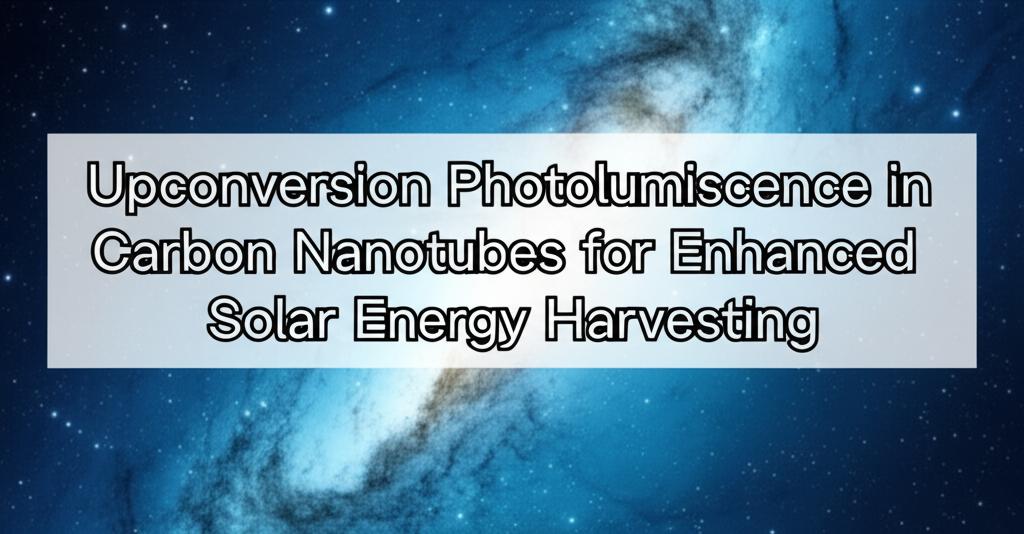Carbon nanotubes (CNTs) are at the forefront of research into enhancing solar energy harvesting, primarily through a phenomenon known as upconversion photoluminescence (UCPL). This process allows CNTs to absorb low-energy photons (like infrared light) and re-emit them as higher-energy photons (visible light), which can then be more effectively converted into electricity by solar cells. This capability addresses a key limitation in solar technology, as a significant portion of the solar spectrum consists of low-energy light that conventional silicon-based solar cells cannot utilize efficiently.
Recent breakthroughs, particularly from researchers at RIKEN Center for Advanced Photonics, have shed light on the intrinsic mechanism behind UCPL in single-walled carbon nanotubes (SWCNTs). Contrary to previous theories that suggested defects in the nanotube structure were necessary for UCPL, new findings indicate that the process can occur with high efficiency even in defect-free nanotubes.
The key to this efficient upconversion lies in the interaction between excitons (electron-hole pairs created when light strikes the material) and phonons (vibrational energy within the nanotube lattice). When an electron is excited by incoming low-energy light, it receives an additional energy boost from a phonon, transitioning into a 'dark exciton' state. After a slight energy loss, this exciton then emits light with a higher energy than the initially absorbed light. This process is facilitated by what are known as K-momentum phonons.
Significantly, researchers have observed that increasing the temperature enhances the UCPL effect. This is because phonons, which are essentially heat energy in the form of lattice vibrations, become more abundant at higher temperatures, thereby increasing the probability of these crucial phonon-mediated energy boosts. The excitation power dependence of UCPL has been found to be nearly linear, suggesting a one-photon, one-phonon absorption process. Furthermore, the strong anisotropic response to excitation polarization confirms the intrinsic nature of this upconversion process within the nanotubes.
These findings are pivotal because they establish an intrinsic model for UCPL in SWCNTs. This deeper understanding opens up new avenues for designing more advanced optoelectronic and photonic devices. The ability to harness a broader spectrum of sunlight by converting sub-bandgap photons into usable energy could lead to significant improvements in solar cell efficiency.
Beyond solar energy, the applications of UCPL in carbon nanotubes extend to other fields such as biological imaging, where converting near-infrared light to visible light can enable deeper tissue penetration and reduced background signals, and even potentially in laser-cooling technologies.
The unique optical and electronic properties of carbon nanotubes, including their wide range of direct bandgaps matching the solar spectrum, strong photoabsorption across various wavelengths (from infrared to ultraviolet), high carrier mobility, and reduced carrier transport scattering, make them ideal candidates for photovoltaic applications. They can function in various roles within solar cell architecture, including as light-harvesting media, in composite photoactive layers, as transparent electrodes, and in dye-sensitized solar cells.
Future research will likely focus on optimizing these UCPL properties in CNTs and integrating them effectively into practical solar cell designs and other photonic devices. The potential to significantly boost solar energy conversion efficiency makes carbon nanotube-based upconversion a critical area of ongoing investigation in the quest for more efficient renewable energy solutions.

